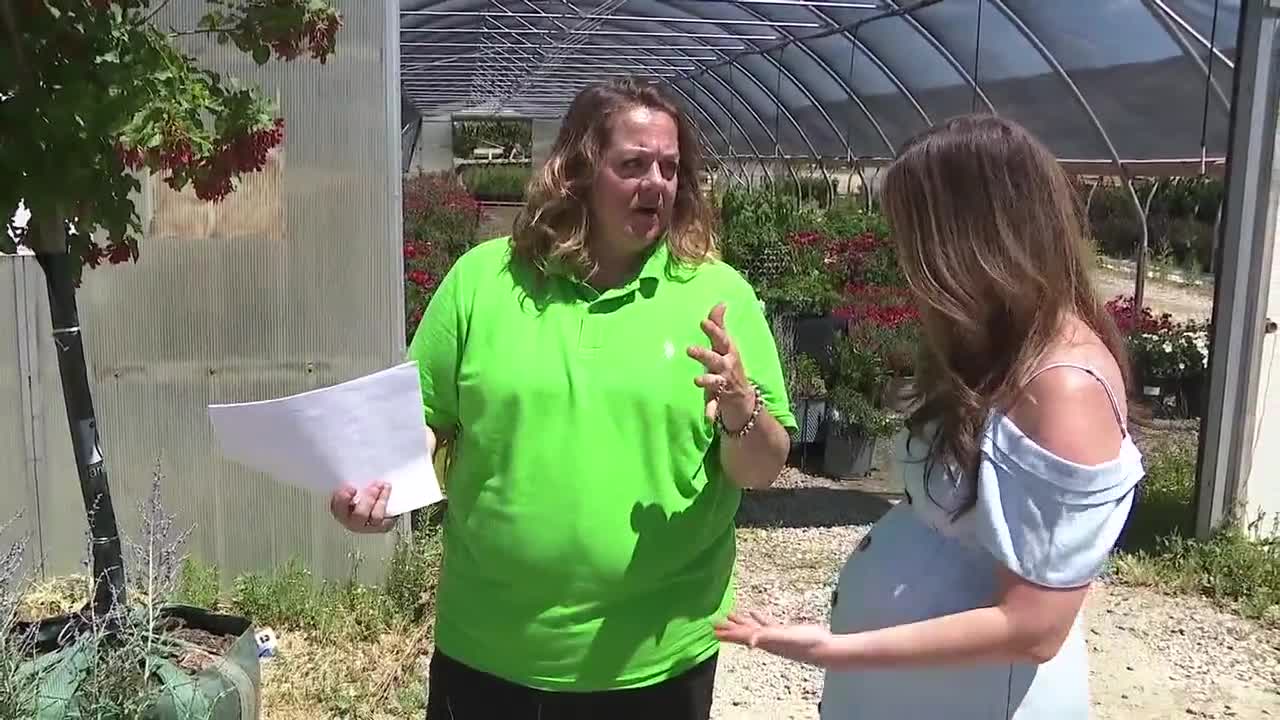BRIGHTON, Colo. — If you want to spruce up your yard, you're not alone! As you walk through garden centers with miles and miles of plants and trees, it might surprise you how few are native to Colorado.
Denver7 met with landscaping expert Nicole Stone, a member of the Associated Landscape Contractors of Colorado, at SiteOne Landscape Supply in Brighton to walk us through how to pick some of the best plants to grow successfully in Colorado.
Stone said Colorado's native species list is pretty small. Some grasses like blue grama, buffalo grass, side-oats grama, little bluestem, and Indian rice grass call Colorado home. Wildflowers like the Rocky Mountain columbine, penstemons, blanketflowers, Indian paintbrush, Alpine Forget-Me-Not and moss campion are also native to the region.

Stone said most of Colorado's native plant material is not what we would want to plant in our yards. She explained they're truly native looking at best. She suggested some options for homeowners that are water-wise but still appealing to the eye.
- Trees: Hot Wings Maple, Catalpa, Ponderosa Pine, Lodgepole Pine, Quaking Aspen, Blue Spruce, and Narrowleaf Cottonwood.
- Shrubs: Fernbush, Pawnee Buttes Sandcherry, Goldfinger Potentilla, False Yucca - Hesperaloe, and Cistena Plum, Gambel Oak, Mountain Mahogany, Rabbitbrush, Chokecherry and Serviceberry.
- Perennials: Ice Plant, Rocky Mountain Penstemon, Coronado Hyssop, Autumn Joy Sedum, and Orange Carpet Hummingbird Mint
- Grasses: Blonde Ambition, Blue Avena, and Prairie Dropseed.
- Other Options: Cliff Fendlerbush, Kinnikinnick, Red-Osier Dogwood.
Water-wise plant material is becoming so important because Colorado is such a dry state, Stone said. Planting material that uses minimal water yet looks amazing is becoming more crucial in creating a more sustainable landscape.
Sustainable landscaping methods consist of techniques used to responsibly reduce yard waste and conserve or reduce water use. For example, choosing plants that are the appropriate size for the lawn or landscape, using only the amount of water needed, and recycling project material waste are critical to staying water-wise, according to Stone. Selecting building materials from local sources is also a top priority when practicing methods of sustainable landscaping projects.
Finally, Stone explained that choosing the right plants for the correct spots will help minimize replanting in the future.





